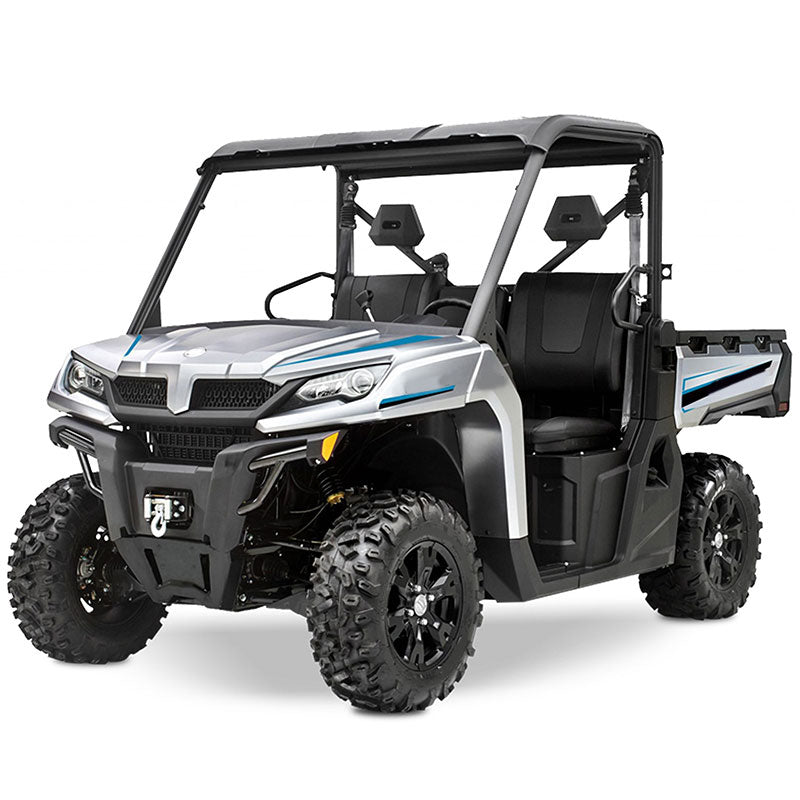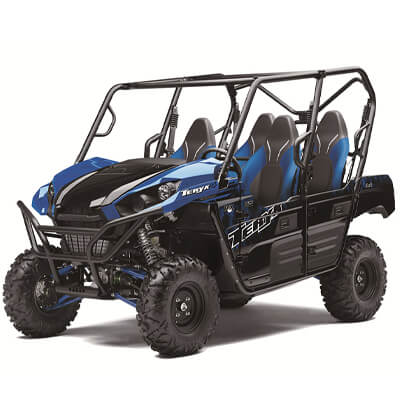Polaris Ranger 1000 vs. XP 1000 Comparing Top Speeds and Performance

Known for their rugged durability, powerful engines, and all-terrain capability, Rangers are a popular choice for industries like farming, hunting, and construction, as well as outdoor enthusiasts. Models like the Ranger 1000 and XP 1000 offer a range of performance features, including high payload capacities, advanced suspension systems, and powerful towing abilities, making them ideal for tackling tough jobs and adventurous rides alike.
Comparing the top speeds of the Polaris Ranger 1000 and XP 1000 helps users determine which model best suits their specific needs. While both models are engineered for performance, the XP 1000 typically offers a higher top speed due to its more powerful engine, making it better suited for fast-paced recreational riding or quick transportation over large areas. On the other hand, the Ranger 1000 provides reliable speed for utility work while being more affordable, making it an excellent choice for users who prioritize work over speed. Top speed is an important factor in both utility and recreational riding.
Let’s compare the Polaris Ranger 1000 and XP 1000 and find out which one would be a better choice.
Overview of Polaris Ranger 1000
The Polaris Ranger 1000 is a versatile utility vehicle designed to meet the demands of both heavy-duty work and outdoor recreational activities. With its robust engine, impressive towing and payload capacities, and a range of comfort and safety features, the Ranger 1000 stands out as a reliable and capable UTV. Whether navigating tough terrains or handling demanding tasks, it delivers a balance of power, durability, and ease of use.
In terms of top speed, the Polaris Ranger 1000, powered by a 999cc ProStar SOHC engine with 61 horsepower, reaches a maximum speed of approximately 55 mph. While not as fast as the XP 1000, this top speed is sufficient for most utility tasks and recreational rides, offering a smooth balance between speed and torque. The Ranger 1000 is optimized for low-end power, making it excellent for towing, hauling, and working on rough terrain where speed is less critical than control and stability.
Overview of Polaris Ranger XP 1000
The Polaris Ranger XP 1000 is the flagship model in the Ranger series, offering the highest level of performance, power, and capability. Designed for those who need a tough, versatile utility vehicle that can handle the most demanding tasks and challenging terrains, the XP 1000 is equipped with a powerful engine, premium suspension, and advanced features that make it stand out in both work and recreational environments. Whether used for hauling heavy loads, towing, or exploring off-road trails, the Ranger XP 1000 delivers top-tier performance and reliability.
One of its key performance attributes is its impressive top speed. Powered by an 82-horsepower 999cc ProStar engine, the XP 1000 can reach speeds of up to 60-65 mph, making it one of the fastest UTVs in its class. This high-speed capability is especially beneficial for covering large distances quickly, whether on the job or during recreational riding. The vehicle’s top speed, combined with its rugged off-road capabilities, makes it a versatile choice for users who need both power and speed in a utility vehicle.
Top Speeds of Polaris Ranger 1000 and XP 1000
The top speeds of these vehicles have varied slightly over the years, largely due to engine improvements, vehicle tuning, and other upgrades. Here’s a general breakdown of their top speeds:
Ranger 1000 (Standard):
- 2015 to 2017: These earlier models were equipped with a less powerful engine. The top speed was typically 45-50
- 2018 to 2020: A newer engine (999cc) was introduced, improving overall performance. The top speed increased to around 55
- 2021 to 2024: Polaris made some additional refinements, keeping the top speed steady at around 55mph, with slight improvements in acceleration and handling.
Ranger XP 1000:
- 2015 to 2017: The XP 1000 series came with a more powerful engine from the beginning, capable of hitting 55-60
- 2018 to 2020: The models during this period benefited from fine-tuning, with the top speed reaching about 60
- 2021 to 2024: Polaris refined the XP 1000 even more, focusing on power delivery and ride comfort, while maintaining a top speed of around 60mph (96 km/h), with improvements in handling, suspension, and power. The XP models focus more on combining utility with sport-like performance.
Factors affect the top speed
Several factors can affect the top speed of the Polaris Ranger 1000 and XP 1000 models, including both mechanical and environmental influences. Here are the key factors:
1. Engine Power and Tuning:
- Ranger 1000:It has a single overhead cam (SOHC) 999cc engine producing about 61 horsepower, which influences its top speed.
- XP 1000: This version has a double overhead cam (DOHC) 999cc engine with around 82 horsepower, offering more power, which generally results in a higher top speed compared to the base Ranger 1000.
2. Weight and Payload:
Both the rider's weight and the payload affect the top speed. Carrying heavy loads or multiple passengers can slow down the vehicle.
3. Transmission and Gearing:
The Polaris Ranger models have a Continuously Variable Transmission (CVT). The gearing setup within the transmission plays a role in determining the maximum speed. The XP 1000 has a more performance-oriented transmission setup, leading to a higher top speed compared to the Ranger 1000.
4. Tires and Tire Pressure:
Larger tires or those designed for off-road traction can reduce top speed due to increased rolling resistance. Under-inflated tires can also reduce speed. In contrast, properly inflated and road-oriented tires can maximize speed.
5. Aerodynamics:
The boxy design of the Polaris Ranger limits its aerodynamic efficiency, which can reduce top speed. Adding accessories like windshields or roofs may add drag, further reducing speed.
6. Terrain:
The type of terrain affects speed significantly. On flat, smooth surfaces like paved roads, the vehicle can reach its maximum speed. Off-road terrain with rocks, mud, or hills reduces the speed due to increased rolling resistance and need for traction.
7. Altitude and Air Density:
Higher altitudes have lower air density, which can reduce engine performance, leading to a lower top speed. Conversely, at sea level, engines perform better due to denser air.
8. Weather Conditions:
Wind resistance plays a big role in limiting top speed. A headwind can slow the vehicle, while a tailwind can increase speed slightly.
9. Vehicle Modifications:
Any aftermarket modifications, such as performance chips, exhaust upgrades, or intake modifications, can affect the vehicle's top speed by improving engine efficiency or power output.
10. Governor and Speed Limiter:
Both models have an electronic speed limiter, which restricts the top speed. The Ranger 1000 typically tops out at about 55 mph, while the XP 1000 can reach around 60-65 mph, depending on the limiter settings.
These factors combined determine the actual top speed that can be achieved on the Polaris Ranger 1000 and XP 1000 models. In daily tasks like towing and hauling, speed is secondary to power and control, while for recreational riding, the top speed is a key factor in performance and enjoyment.
Make A Right Choice
In conclusion, the top speed of the Polaris Ranger 1000 and XP 1000 influence different tasks in varying degrees. For towing and hauling, the need for controlled power and stability far outweighs the benefit of higher top speeds. Whether moving heavy loads across farms or construction sites, these tasks are primarily performed at lower speeds where torque and safety are critical. While the extra power of the XP 1000 might make it easier to handle challenging terrain or inclines, top speed plays a minimal role in these scenarios.
On the other hand, when it comes to recreational riding, top speed becomes a more significant factor. The XP 1000’s higher speed makes it ideal for riders who enjoy the thrill of faster off-road driving, covering trails or open fields with ease. For enthusiasts who seek a balance between work and play, the XP 1000’s added speed offers the excitement needed for recreational use while still retaining the utility for daily tasks.
Ultimately, while the Polaris Ranger's top speed doesn't drastically affect most work-related tasks, it enhances the fun and versatility for recreational riders, making the XP 1000 a more dynamic option for those who want to blend productivity with adventure.











Leave a comment